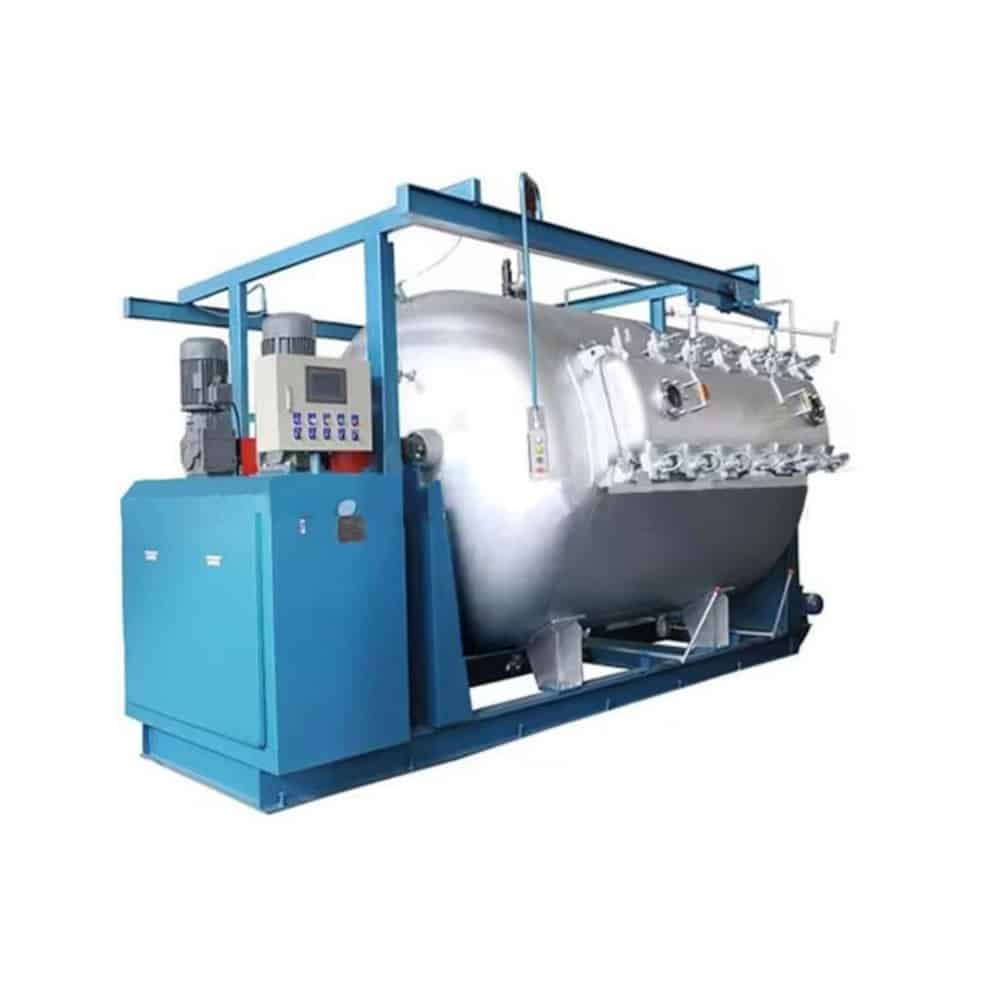High vs. Normal Temperature Jigger Dyeing Machines: Which One Is Right for You?

Picking the right jigger dyeing machine feels a lot like choosing between a sports car and an SUV. Both will get you where you’re going, but they’re built for totally different journeys. And just like buying the wrong vehicle, getting the wrong dyeing equipment can leave you stuck with a machine that doesn’t fit your needs.
Let’s cut through all the technical mumbo-jumbo and talk about what really matters when you’re deciding between high-temperature and normal-temperature options. Because at the end of the day, you need equipment that makes money, not headaches.
The Jigger Dyeing Machine Basics Nobody Explains
Think of a jigger dyeing machine as the world’s most expensive washing machine. Your fabric takes a nice, long soak in a dye bath, going back and forth until every fiber has absorbed just the right amount of color. It’s like making tea, but instead of steeping leaves, you’re steeping fabric.
The beauty of this whole setup is its simplicity. Whether you’re dealing with delicate silk scarves or heavy canvas work pants, a good jigger dyeing machine treats each piece with the same careful attention. No rushing, no shortcuts – just steady, reliable results.
JRHP Series: When You Need to Crank Up the Heat
The JRHP series jigger dyeing machine is basically the powerhouse of the dyeing world. We’re talking temperatures that can hit 130°C – hot enough to make your morning coffee jealous. But there’s a method to this madness.
Speed is King
When you fire up a high-temperature jigger dyeing machine, things happen fast. Dye penetrates fabric like butter melting on hot toast. What might take hours at normal temperatures can be done in half the time when you turn up the heat. If you’ve got customers breathing down your neck for quick turnarounds, this speed advantage is worth its weight in gold.
Synthetic Fabrics Love the Heat
Here’s something most people don’t realize: synthetic fabrics are stubborn. Polyester, nylon, and those cotton-poly blends are like teenagers – they need some serious persuasion to cooperate. A regular-temperature jigger dyeing machine trying to dye polyester is like trying to butter cold toast with a plastic knife. It’s frustrating and the results are disappointing.
High temperatures break down the resistance in synthetic fibers, letting dye molecules slip right in where they belong. The colors come out vibrant, even, and they stay put through countless wash cycles.
The Trade-offs
Sure, your electric bill might make you wince a bit. High-temperature operations eat more power, not getting around that. But when you factor in the increased productivity and better results on synthetic materials, most manufacturers find the extra cost pays for itself pretty quickly.
JRN Series: The Gentle Giant Approach
The JRN series jigger dyeing machine takes a completely different approach. It’s like the difference between a firm handshake and a bear hug – sometimes gentler gets better results.
Natural Fibers Breathe Easy
Cotton, wool, linen, and silk are delicate souls. Hit them with too much heat and they’ll shrink, lose their softness, or worse – fall apart completely. A normal-temperature jigger dyeing machine treats these materials like the precious commodities they are.
The lower heat lets natural fibers maintain their integrity while still accepting dye beautifully. Your cotton comes out soft and comfortable, wool stays fluffy, and silk keeps that luxurious feel customers pay premium prices for.
Your Wallet Will Thank You
Operating at normal temperatures is easier on everyone – your equipment, your energy bills, and your maintenance crew. Less heat means less stress on components, which translates to fewer breakdowns and longer equipment life. It’s like driving at 55 instead of 85 – you’ll get there safely and your car will last longer.
Making the Smart Choice for Your Business
Here’s the million-dollar question: which jigger dyeing machine makes sense for your operation?
Look at Your Fabric Mix
If you’re primarily processing natural fibers like cotton bedsheets or linen table cloths, the normal-temperature route is your sweet spot. You’ll get excellent results without risking damage to expensive materials.
But if synthetic fabrics dominate your workload – think athletic wear, outdoor gear, or uniform fabrics – you need the high-temperature firepower. There’s simply no substitute for proper heat when dealing with polyester and its synthetic cousins.
Consider Your Production Reality
High-volume shops with tight deadlines often find the speed advantages of high-temperature processing worth the extra operating costs. Smaller operations or those handling diverse fabric types might prefer the flexibility and lower costs of normal-temperature equipment.
Think Long-term
A jigger dyeing machine isn’t just a purchase – it’s a business partner you’ll be working with for years. Consider where your market is heading. Are synthetic blends becoming more popular in your niche? Is sustainability pushing customers toward natural fibers?
The smart money goes on equipment that matches not just your current needs, but where your business is heading. Because buying the wrong jigger dyeing machine today means living with that mistake for a very long time.

Basanti Brahmbhatt
Basanti Brahmbhatt is the founder of Shayaristan.net, a platform dedicated to fresh and heartfelt Hindi Shayari. With a passion for poetry and creativity, I curates soulful verses paired with beautiful images to inspire readers. Connect with me for the latest Shayari and poetic expressions.
